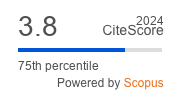Article | Open Access
Spatial Segregation, Redistribution and Welfare: A Theoretical Model
| Views: | 3478 | | | Downloads: | 2309 |
Abstract: This paper develops a theoretical model focusing on the effect that different neighborhood compositions can have on the formation of individual beliefs about economic opportunities. Specifically we highlight two effects that spatial segregation may have: (1) it can efficiently separate the individual effort choices of highly and low productive individuals, (2) it may imply that the median voter imposes a level of redistribution that is inefficient from the aggregate point of view. The trade-off implies that segregated and non-segregated cities may present very similar levels of aggregate welfare. We employ this framework to discuss how the structure of cities can play a role in the determination of US-type and Europe-type politico-economic equilibria and the implications for planning policies.
Keywords: median voter; redistribution; spatial segregation; welfare
Published:
© Tommaso Gabrieli. This is an open access article distributed under the terms of the Creative Commons Attribution 4.0 license (http://creativecommons.org/licenses/by/4.0), which permits any use, distribution, and reproduction of the work without further permission provided the original author(s) and source are credited.


